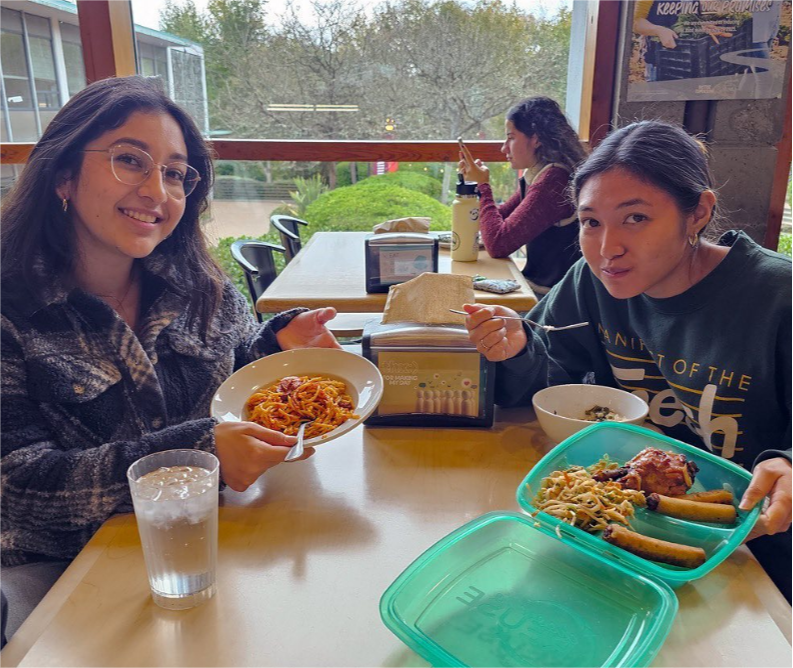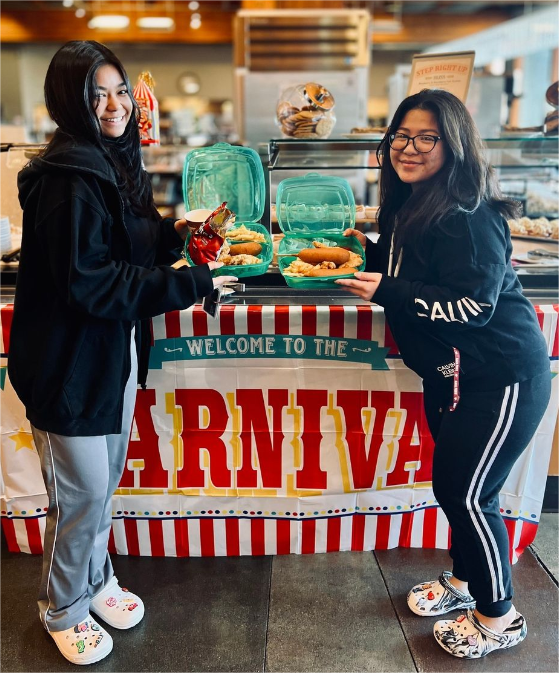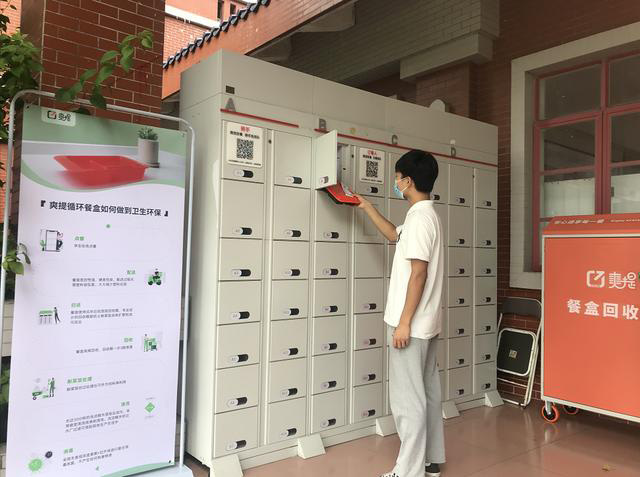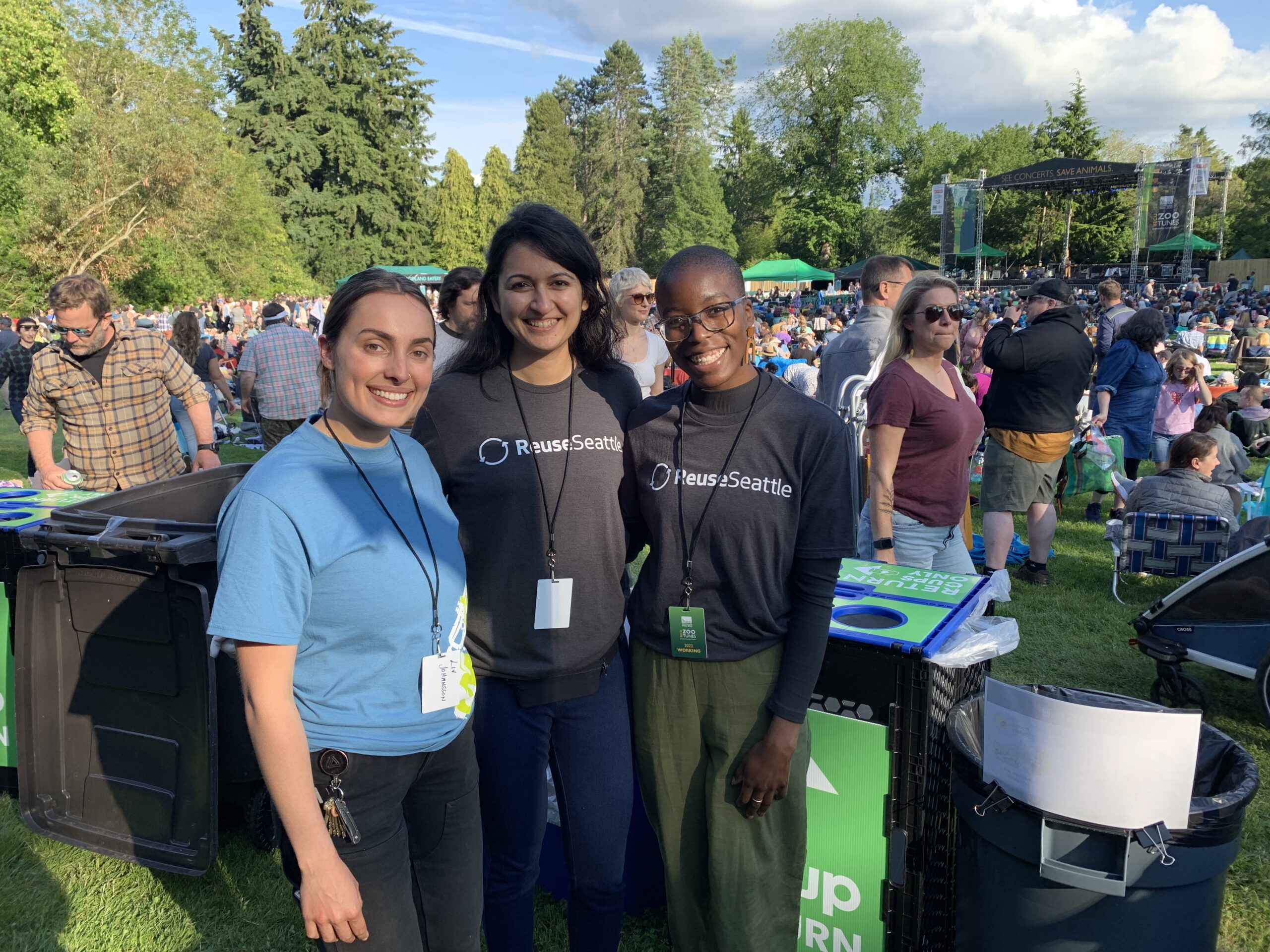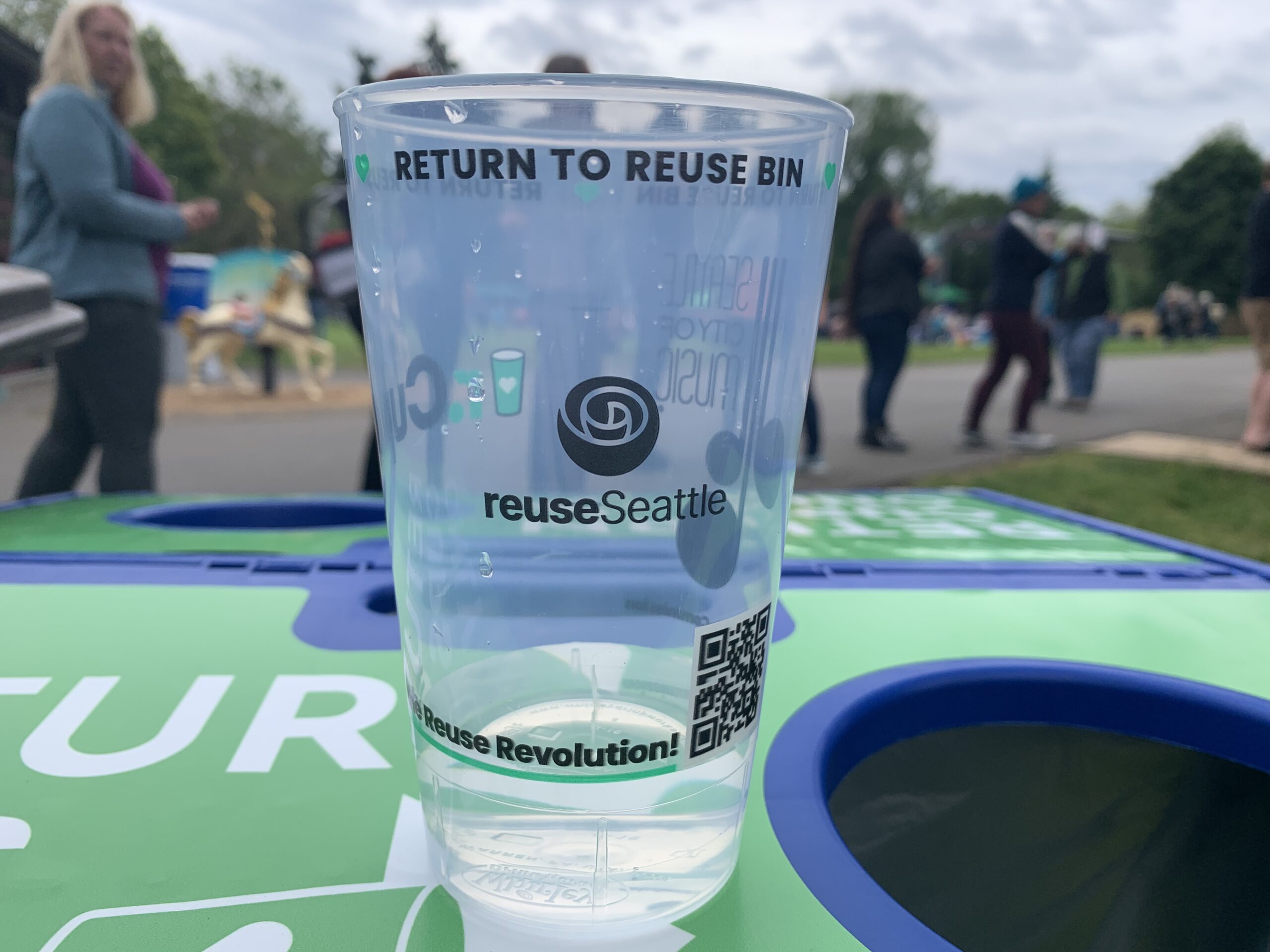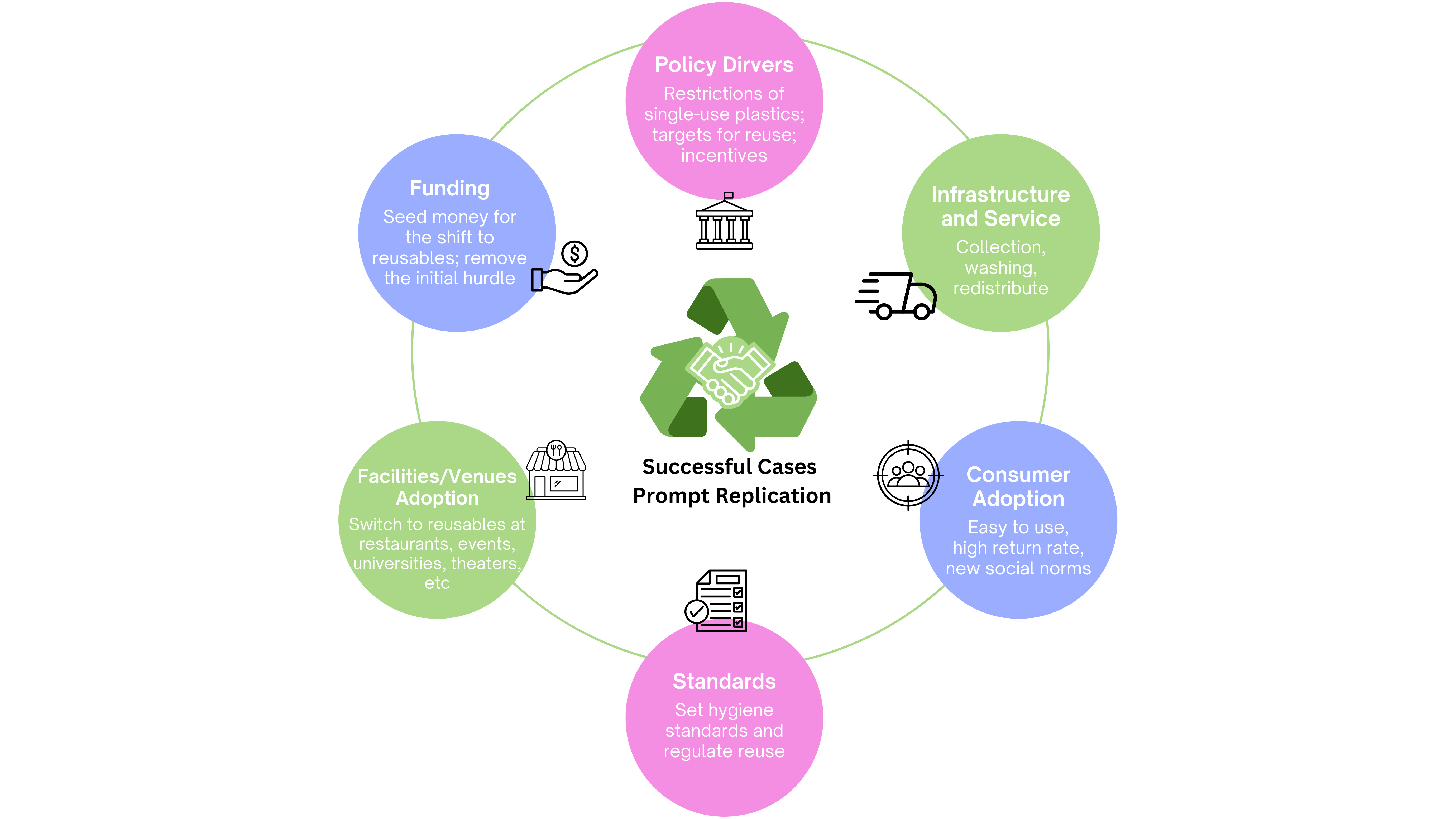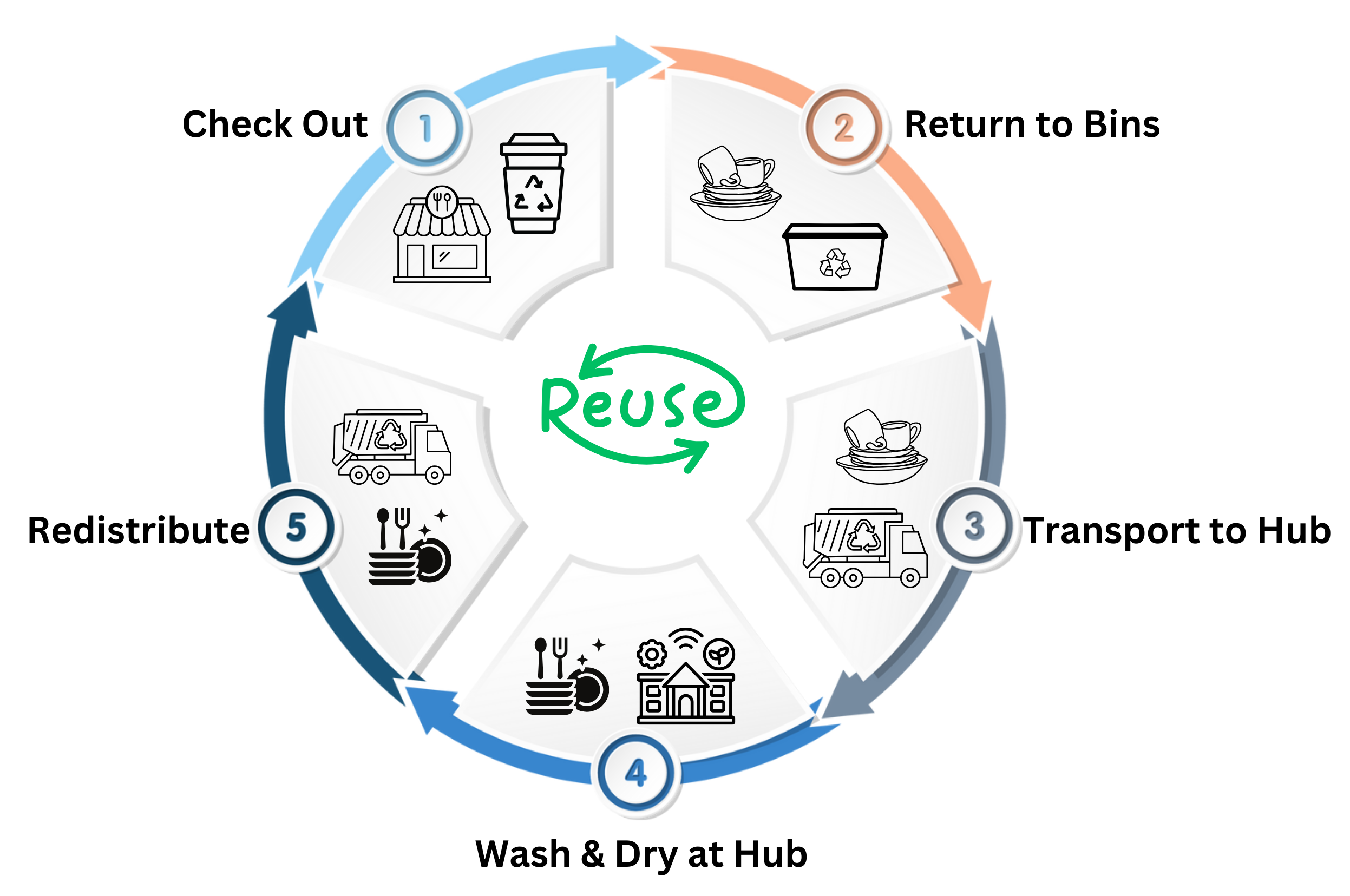-
Reusable Food Packaging in US and China: Closing the Loop on Plastics in Closed Environments
June 6, 2024 By Danning LuDuring the World Wildlife Fund’s Plastic Policy Summit in March in Washington D.C., I grabbed coffee in a white ceramic mug provided by the convention venue. Reusable mugs seemed unusual amid today’s prevalence of single-use cups, prompting me to reflect on how we have normalized single-use: I bought yogurt and soda in returnable bottles in Beijing; generations before us grew up with reuse. Why did we move away from it?
Facing the plastic waste and climate emergency, we should accelerate the return to reusable food packaging. Packaging accounts for 40% of global plastic waste, the largest generator of single-use plastic (SUP) waste. Food packaging comprises half of all fossil-fuel based packaging plastics. 85% of SUP food and beverage containers end up in landfill or mismanaged. Reusable packaging is emphasized as a plastic solution at INC-4 and the UN Environment Programme states that reuse options could cut plastic pollution by 30% by 2040.
Transitioning to reusable packaging raises cost, behavior change, and sanitation concerns. Nevertheless, it is possible and some cities and companies in the US and China have proved that it works in closed environments like university campuses and entertainment venues. Accelerating implementation of reusable cups and containers in closed environments is an encouraging start for the reuse revolution.
Savor and Save with Reuse on University Campuses
University campuses offer great potential for reusable food packaging in the United States and in China. The closed campus environment, high population density, and sanitization infrastructure at cafeterias have made universities ideal venues for reuse.
Seattle Pacific University launched reusable takeout containers in 2018 with investment from their dining service provider Sodexo. Students pay $5 for four-year access to a reusable container, and exchange dirty containers for clean ones to avoid an extra fee. Few containers are lost: a similar program at Washington State University achieves 97% return rate. Students also reduce food waste and save money by packing leftovers
Students packing food in reusable containers at Seattle Pacific University’s dining hall
In China, a company Shuangti introduced smart, trackable containers at Southern Medical University in Guangdong province in October 2020, pioneering campus-wide reuse. Shuangti staff put packed food from the cafeteria into delivery lockers and students return containers to lockers, which get washed at the cafeteria and redistributed. One container is reused 63 times over its lifespan and overall reusables cut half a million SUP containers per year at the school. A study predicts that a 10% adoption of reusable containers in China’s food takeaway industry could cut 26,000 tons of CO2 emissions by 2025.
Student taking food in reusable container from Shuangti’s locker at Southern Medical University
These campus-wide reusables, with coordination between university leadership, dining services, student groups, and outside partner organizations, can be replicated at other universities. Some students express sanitary concerns of reusables, but most universities are sanitizing containers based on cleaning standards of usual dining hall service wares and organizations are developing universal washing standards for reusables. McKenna Morrigan of Seattle Public Utilities, a government agency supporting adoption of reusable containers in Seattle, stated that the agency is working with its local health department to develop protocols for reviewing washing facilities’ operations plans to ensure they adhere to sanitation standards.
Rock with Reuse at Music Festivals and Entertainment Venues
Events venues are another way to catalyze the reuse revolution. Music festivals are “smaller, lower risk environments to prove the concept. If we show success at this level, larger venues are more comfortable trying out,” said McKenna.
Reuse Seattle, a municipal government-led partnership initiative aimed at city-scale reuse, launched the reusable cup program at the ZooTunes summer concert series at the Woodland Park Zoo in 2022. ZooTunes’ reusable cup program is facilitated by a $500 grant from Seattle Public Utilities and the Zoo covered the reusable cup operating cost. In the first year, the program diverted 471 pounds of waste, achieving over 95 percent cup recovery rate with reuse service provider r.World. Reuse Seattle will launch more reusable cup programs at special events this fall.
 Reuse Seattle Staff assisting collection of cups at ZooTunes summer concert series
Reuse Seattle Staff assisting collection of cups at ZooTunes summer concert series Returning a reusable cup to a collection bin
Returning a reusable cup to a collection binClosing the Loop in Closed Environments as a First Step to Scale Reuse
Friends of Nature, a Chinese NGO, also promoted zero waste at MTA Tianmo Music Festival in 2018 inspired by Japanese Fuji Rock. They encouraged bring-your-own bottle in the festival’s advertisement and refused to provide SUP cups or bottled water. According to a staff member Wu Xiao, music festivals have great educational effects as they demonstrate waste sorting and eco-awareness for the audiences.
Beyond one-off festivals, more than a dozen entertainment venues in Seattle so far have normalized reusable cups in daily operation. Several factors enable reuse in this setting by first building infrastructure, obtaining funding, developing policies to drive reuse and tracking cost and impact. For example, according to McKenna, Seattle is “fortunate to have r.World privately finance a washing facility in the city given Seattle’s vision for reuse.” Seattle Public Utilities received an initial grant from the Washington Environmental Council to cover staff time in engaging with entertainment venues. As the number of venues choosing reusable cups grows, interest is growing, and venues need less convincing to adopt reuse.
They also secured funding from Seattle city’s Office of Economic Development to support food service businesses and venues in shifting to reusables for on-site dining. According to McKenna “all on-site dining services are already required to have either reusable or compostable food wares, and choosing reusables is often a lower-cost option in the long run”. Facilities can apply for grants to help cover the upfront costs of transitioning to reusable food wares.
Closing the Loop in Closed Environments as a First Step to Scale Reuse
The cases above prove the success of reusable food packaging in closed environments. They still can improve through higher use rate to bring economies of scale and adoption of official hygiene codes. Reuse policies, which are currently lacking, are also key to widespread adoption. While reuse is nascent, a recipe for success is clear.
Recipe for Reuse to Work
Some cities have followed the recipe to attempt larger-scale reuse: Durham, North Carolina has restaurants that offer to-go food in reusable containers and deploys return stations across the city; Seoul has funded hundreds of restaurants’ reusable delivery containers and banned disposables at city government events; Taipei’s convenience stores and fast food restaurants provide reusable cup rentals and SUP cup ban was successfully enforced in 2023; four cities in the US are also designing city-scale reuse.

How a city-scale reuse system works
The ultimate vision is societal-wide – open environment reuse that is economically and environmentally sustainable. It requires continued efforts to develop Extended Producer Responsibility laws, shared collection infrastructure, standardized packaging, and behavioral change campaigns. This aspirational vision is challenging to implement currently, but following the recipe to implement reuse in closed environments is a practical first step to train societal muscle for reuse and build up replicable success.
This blog is part of the Wilson Center-East-West Center Vulnerable Deltas project that is diving into climate, plastic waste and development threats to three SE Asian and two Chinese deltas. The project is supported by the Luce Foundation.
Danning Lu is a Spring ’24 at China Environment Forum. She is an environmental social science researcher from China graduated from Wheaton College (IL) and Yale School of the Environment. She has experience working with various environmental NGOs in China and researching grassroots environmental actions. She is pursuing a PhD in development studies at Cornell University.
Sources: OECD, UNEP, Materials, The Spoon, Sohu, Reuse Seattle, Seattle Pacific University, Washington State University, Xueqiu, Plastic Free China, China Clean Development Mechanism Fund, Daily Trojan, PR3 Standards, Friends of Nature, Zhonghuahuanjingwang, Upstream Solutions, Don’t Waste Durham, Aju Press, Korea Times, Greenpeace, Taipei Times, Perpetualuse
Header Photo Credit: Courtesy of Richard Rahardja, Seattle Pacific University Dining Services
Second Photo Credit: Courtesy of Richard Rahardja, Seattle Pacific University Dining Services
Third Photo Credit: Courtesy of Plastic Free China, from their report
Fourth Photo Credit: Courtesy of Seattle Public Utilities Pat Kaufman
Fifth Photo Credit: Courtesy of Seattle Public Utilities Pat Kaufman
 A Publication of the Stimson Center.
A Publication of the Stimson Center.

